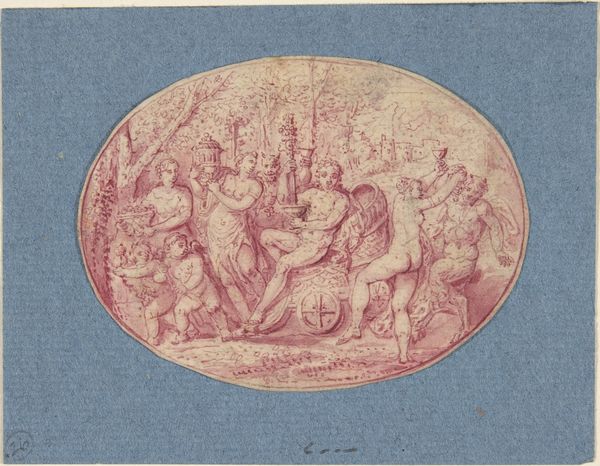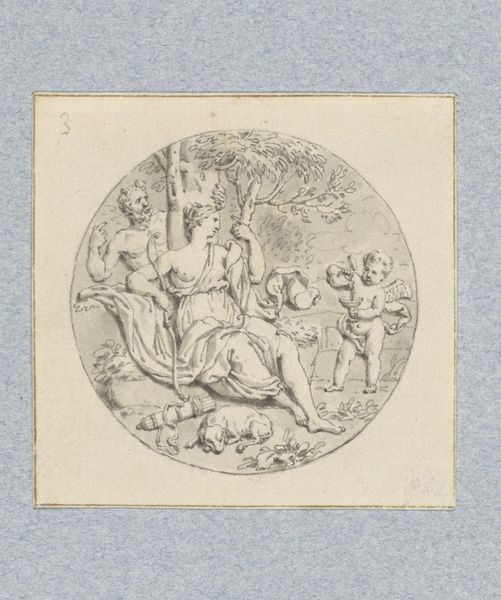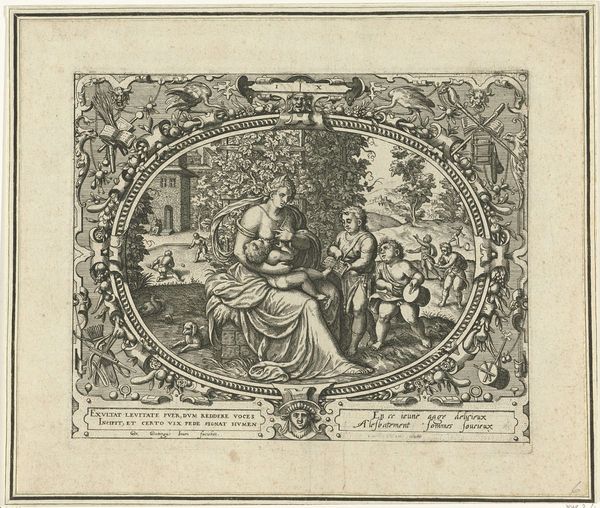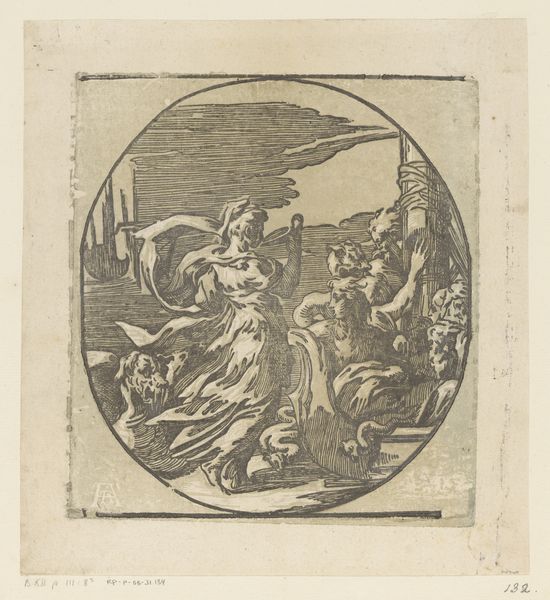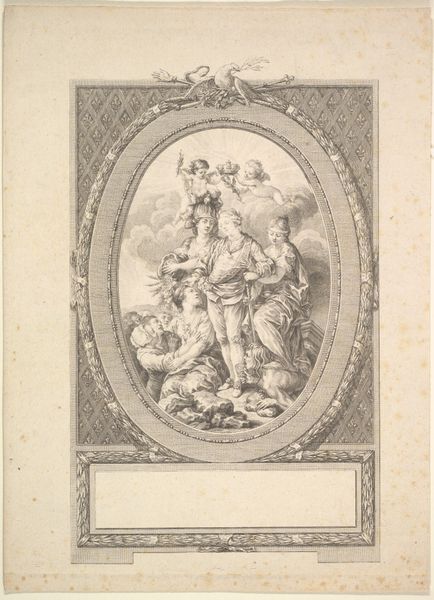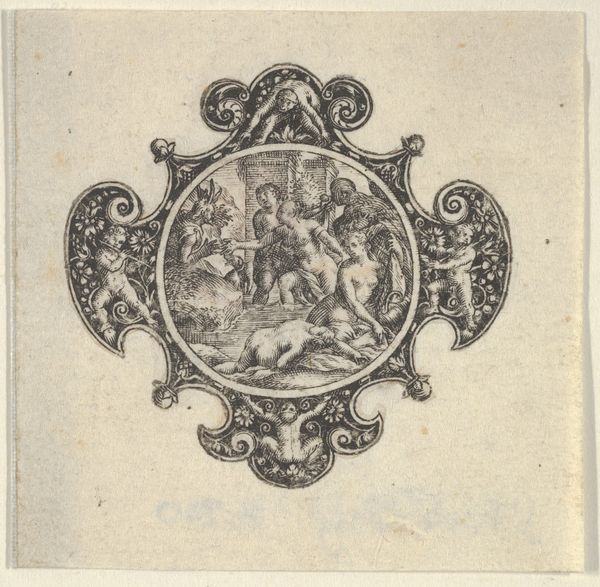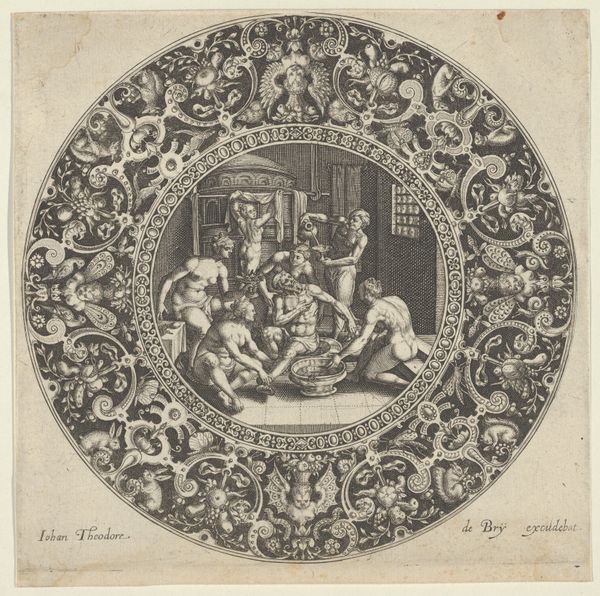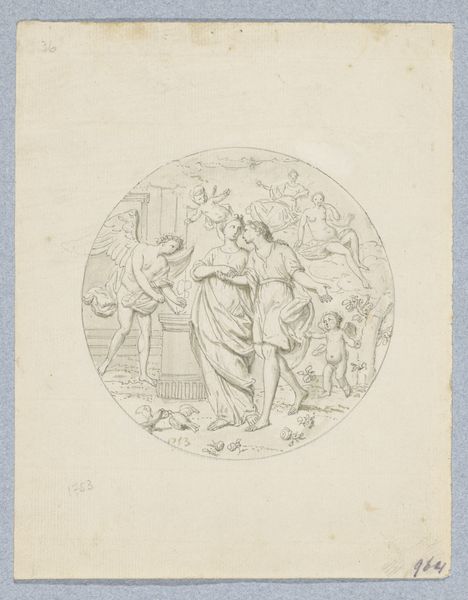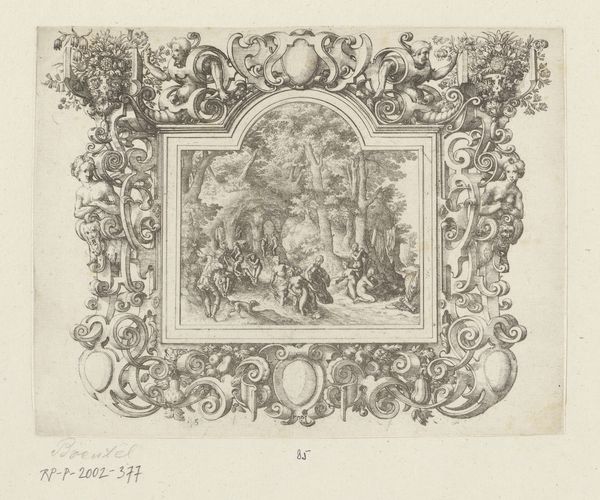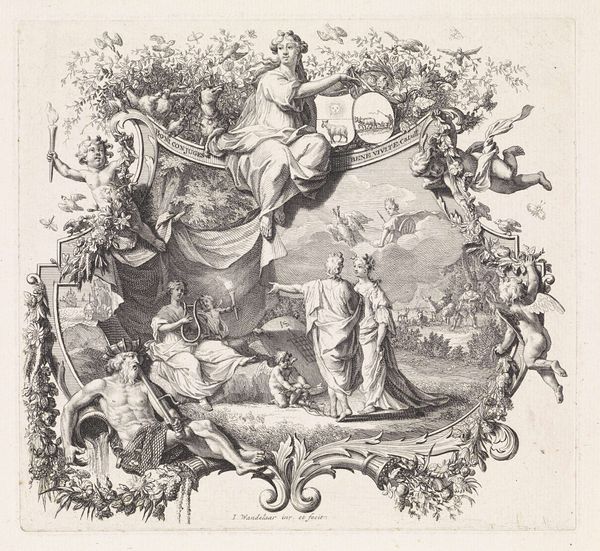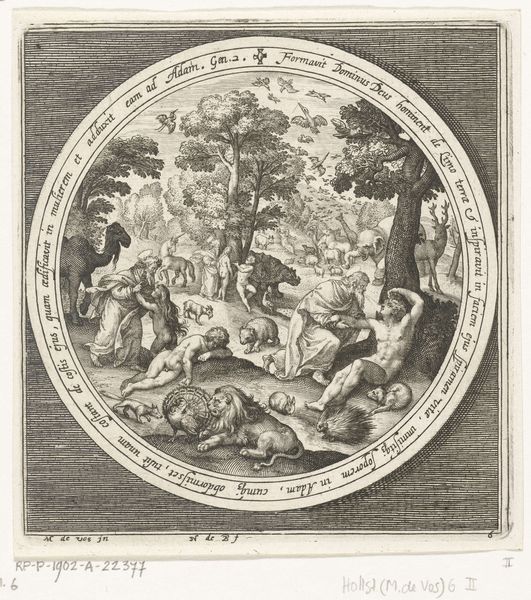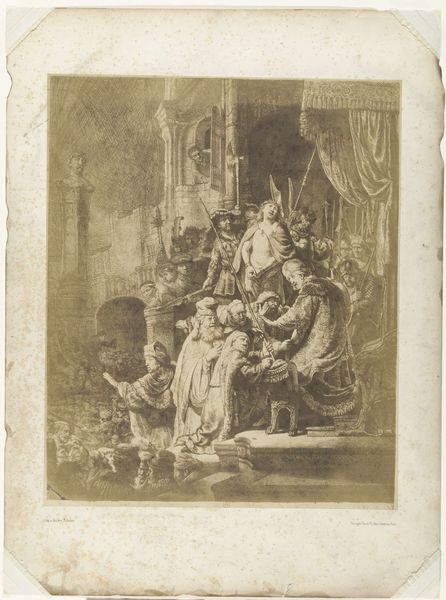
drawing, print, paper, ink, engraving
#
drawing
#
allegory
# print
#
paper
#
11_renaissance
#
ink
#
history-painting
#
nude
#
engraving
Dimensions: sheet: 2 1/2 x 3 5/16 in. (6.3 x 8.4 cm)
Copyright: Public Domain
Curator: This delicate drawing, executed in ink on paper, dates from 1600 to 1700. It's held here at the Metropolitan Museum of Art, and it's cataloged as "Ornamental design with Orpheus and Eurydice." Editor: My initial reaction is to its rather dreamy, ethereal quality, especially with this monochrome scheme. There’s almost a muted violence inherent in the narrative, subdued through delicate rendering. Curator: Absolutely. Its execution is characteristic of ornamental designs from the period. Note the circular format, almost like a medallion, indicating a possible inspiration from the world of prints. Designs like this often served as models for artisans, like goldsmiths. What really gets me is the power dynamic within the tragic narrative of Orpheus. Editor: The figures seem consciously posed, not actively interacting—it almost feels performative. Can we explore this theatrical aspect in connection to power? Are Orpheus’ and Eurydice's roles as archetypes affected by this composition, and by gender? Curator: Well, engravings like this functioned in a market dominated by male artists and consumers. Looking at Orpheus here—even with his legendary musical prowess—his physical presence dominates Eurydice who kneels at his feet. We also cannot ignore the gaze on Orpheus, and what the consequences for Eurydice’s afterlife entail if one reflects on their gaze of liberation. It’s almost a celebration of male triumph over female vulnerability. Editor: I think that's a vital point. And looking closely at the background figures – some armored, some draped – contributes to this sense of spectacle, underscoring social hierarchies and constructed mythologies of masculinity and tragedy. Curator: Considering this artwork within its broader historical context sheds light on gender dynamics inherent in both its subject matter and its creation. What do you take away from your analysis? Editor: The drawing has revealed, to me, the ways in which visual imagery and art served to negotiate power during this early modern era, something well displayed across museum exhibitions and institutional practices as a whole. It's made me reflect again on the role and status of art. Curator: It underlines for me how we must engage critically with visual culture, acknowledging its capacity to reinforce social norms, including potentially violent norms based on both gender and race.
Comments
No comments
Be the first to comment and join the conversation on the ultimate creative platform.
